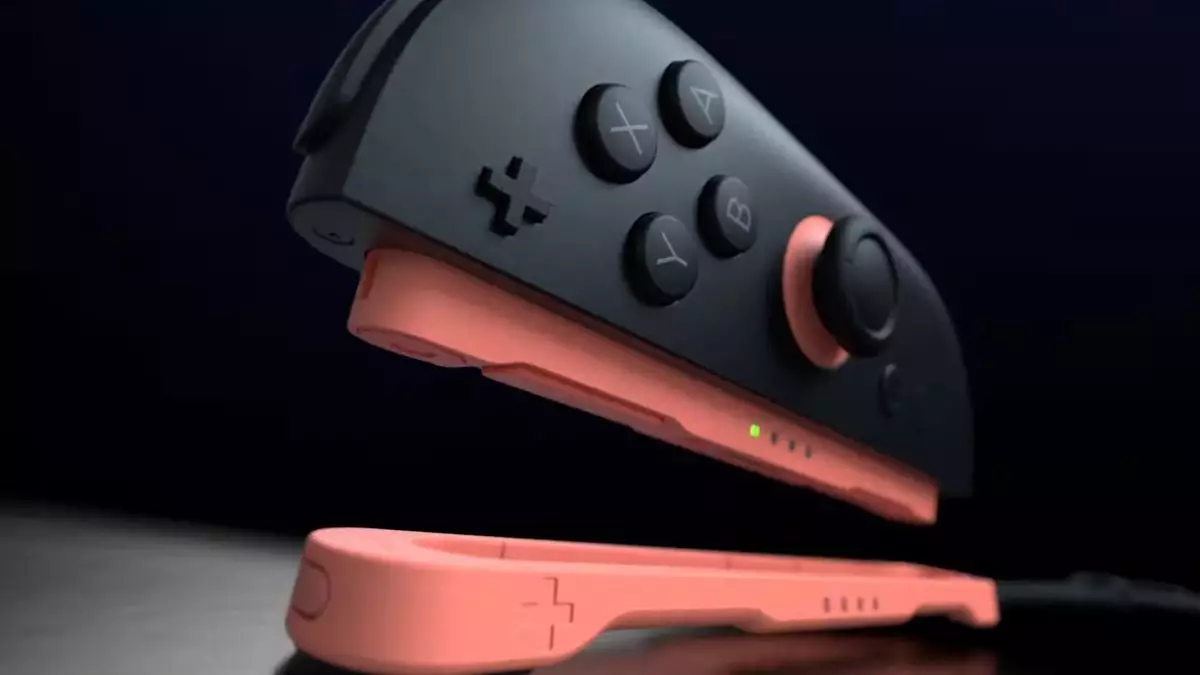The gaming landscape is ever-evolving, and with the anticipated launch of the Nintendo Switch 2, excitement is palpable among fans and gamers alike. However, the highlight emerging from this excitement is not just its gaming library or performance enhancements, but rather the innovative potential of the newly improved Joy-Cons. Recent patent filings have revealed intriguing concepts that align with a more adaptable approach to user input, taking inspiration from traditional gaming setups and fascinatingly blending them into the handheld experience.
One of the standout features hinted at in a recent patent is the capability for the Joy-Cons to function akin to gaming mice. This revolutionary concept suggests that both Joy-Cons can be utilized simultaneously, introducing a dual-input mechanic that straddles the line between console and PC gaming. The foundation for this mouse functionality lies in a sensor integrated into the lower part of the Joy-Con, which requires the device to sit on a surface to accurately gauge movement by reflecting light.
The patent, though complex and originally available in Japanese, provides critical insights into how these controllers can adapt their functionality. With the addition of skates on the bottom of the Joy-Cons, users won’t be tethered to an impractical method of control; instead, these enhancements will allow them to glide the controllers across flat surfaces while retaining complete control through thumbsticks and buttons. This new control scheme could usher in an era where Nintendo games incorporate mouse-movement mechanics, potentially revolutionizing genres that rely heavily on precise inputs, like strategy or puzzle games.
While the prospect of mouse functionality within single-player experiences is exciting, the social aspect of gaming also appears to be addressed with this new tech. Nintendo’s legacy has been built, in part, around multiplayer experiences, with games like “1-2-Switch” and “Snipperclips” showcasing their innovative approach to cooperative gameplay. Having Joy-Cons act as mouse inputs could attract more players to the Nintendo ecosystem, encouraging collaborative gaming in ways previously unexplored.
This dual-wielding capability stands to enhance the cooperative gaming experience, maximizing the potential for interaction and gameplay variety. Given Nintendo’s track record, it’s plausible that they could develop unique multiplayer experiences that take full advantage of the Joy-Con’s newly conceptualized functionalities, potentially inviting new audiences from the PC gaming community.
Nintendo has long been a forerunner in the realm of motion and gyroscopic controls. With devices like the Wii and the DS series, they established a precedent for engaging user experiences based on movement. Although the new Joy-Con functionality hints at the possibility of a mouse-like input, it raises an interesting discussion about the future direction of Nintendo’s control schemes.
The new input methods could represent an evolution rather than a replacement for their established gyroscopic controls. Using both gyroscope integration and mouse capabilities could cater to a broader audience of gamers, striking a balance between those who prefer precise mouse inputs and fans of traditional console controls. Such adaptability could also open new avenues for game developers, allowing for creative gameplay that fully utilizes the advantages of both control types.
Cross-Device Compatibility and Future Potential
Another intriguing aspect of the recent patent includes indications that the Joy-Cons may not just be limited to the Nintendo Switch 2. The filings hint at potential compatibility with other devices, signifying a possibility for the new Joy-Cons to serve in future Nintendo systems or alongside peripherals akin to Labo. This foresight reflects Nintendo’s understanding of sustained user engagement and their commitment to expanding the utility of their technology beyond a single console generation.
While it remains speculative, the idea of an integrated gaming experience that allows users to switch seamlessly between different types of input and platforms suggests an expansive future for Nintendo. By covering their bases with a versatile approach, they not only preserve their investment in hardware but also enhance long-term user satisfaction.
As we stand on the brink of the Nintendo Switch 2’s launch, the curiosity surrounding its innovative Joy-Con features, especially the mouse functionality, is just the beginning. The blend of tradition and innovation exemplified in this upcoming console has the potential to redefine gameplay in ways both familiar and unforeseen. Enthusiasts of all platforms can look forward to a reimagined gaming experience where uniqueness prevails, and as always with Nintendo, we can expect the unexpected in their pursuit of exceptional interactive experiences.

